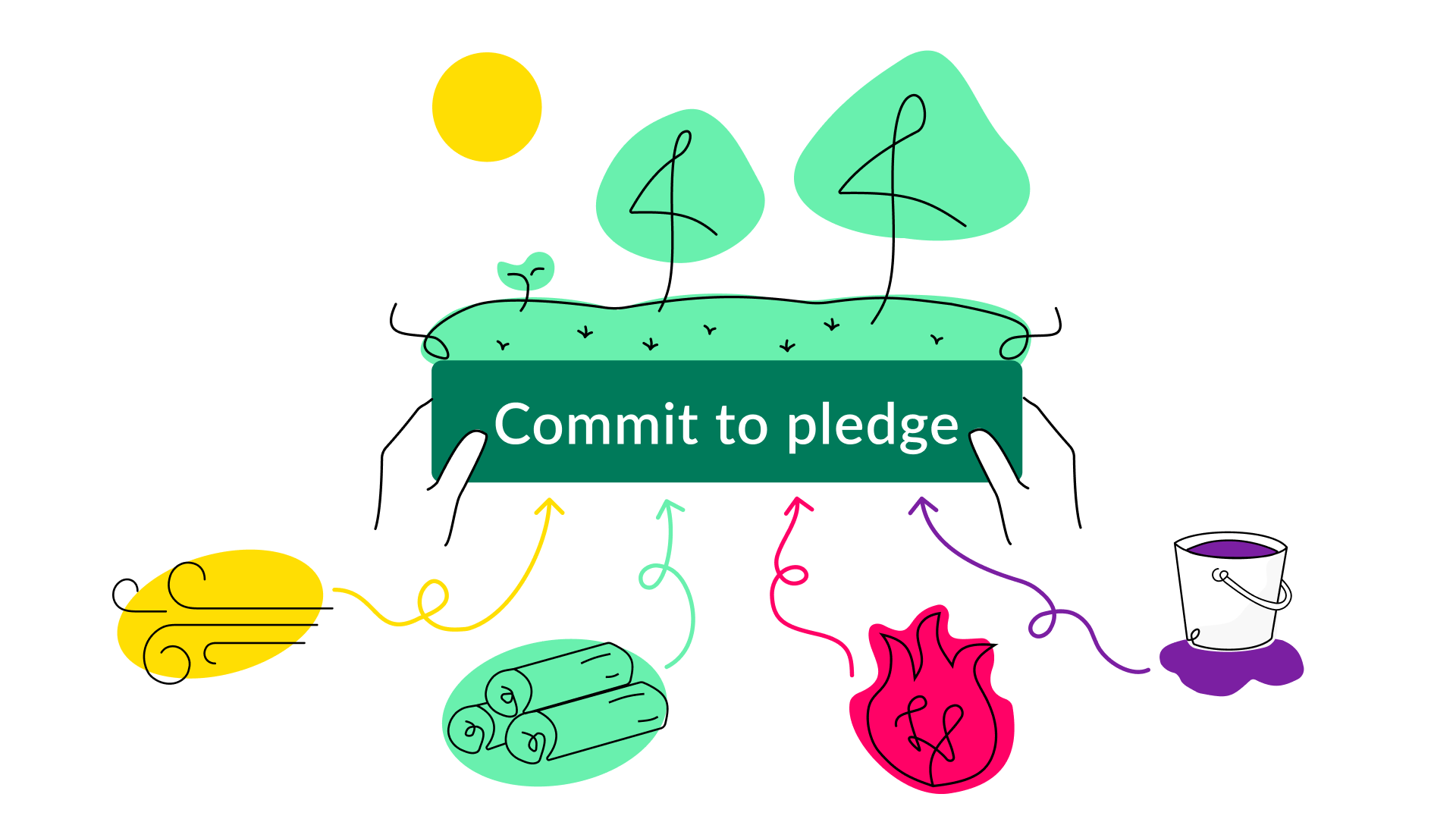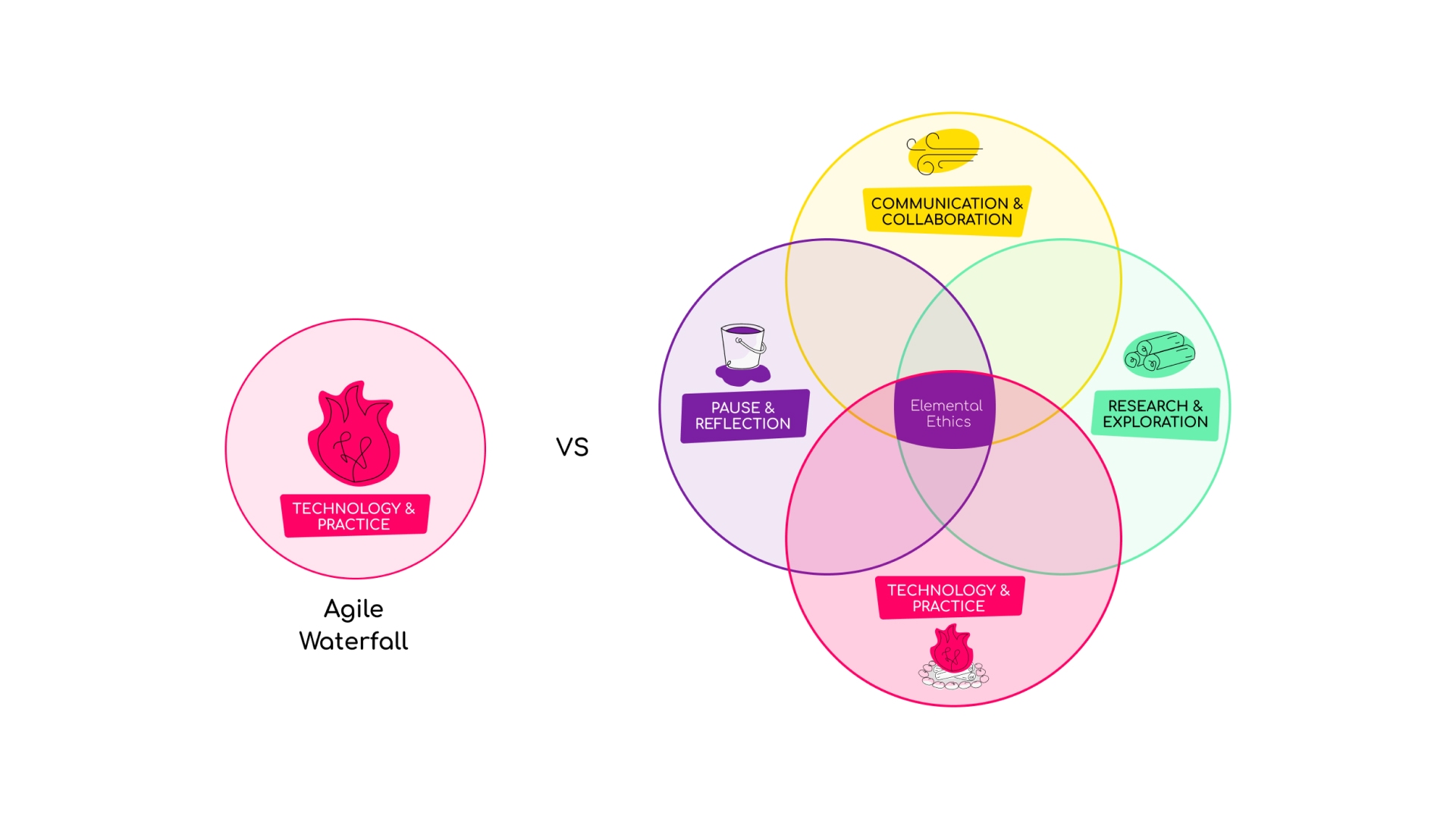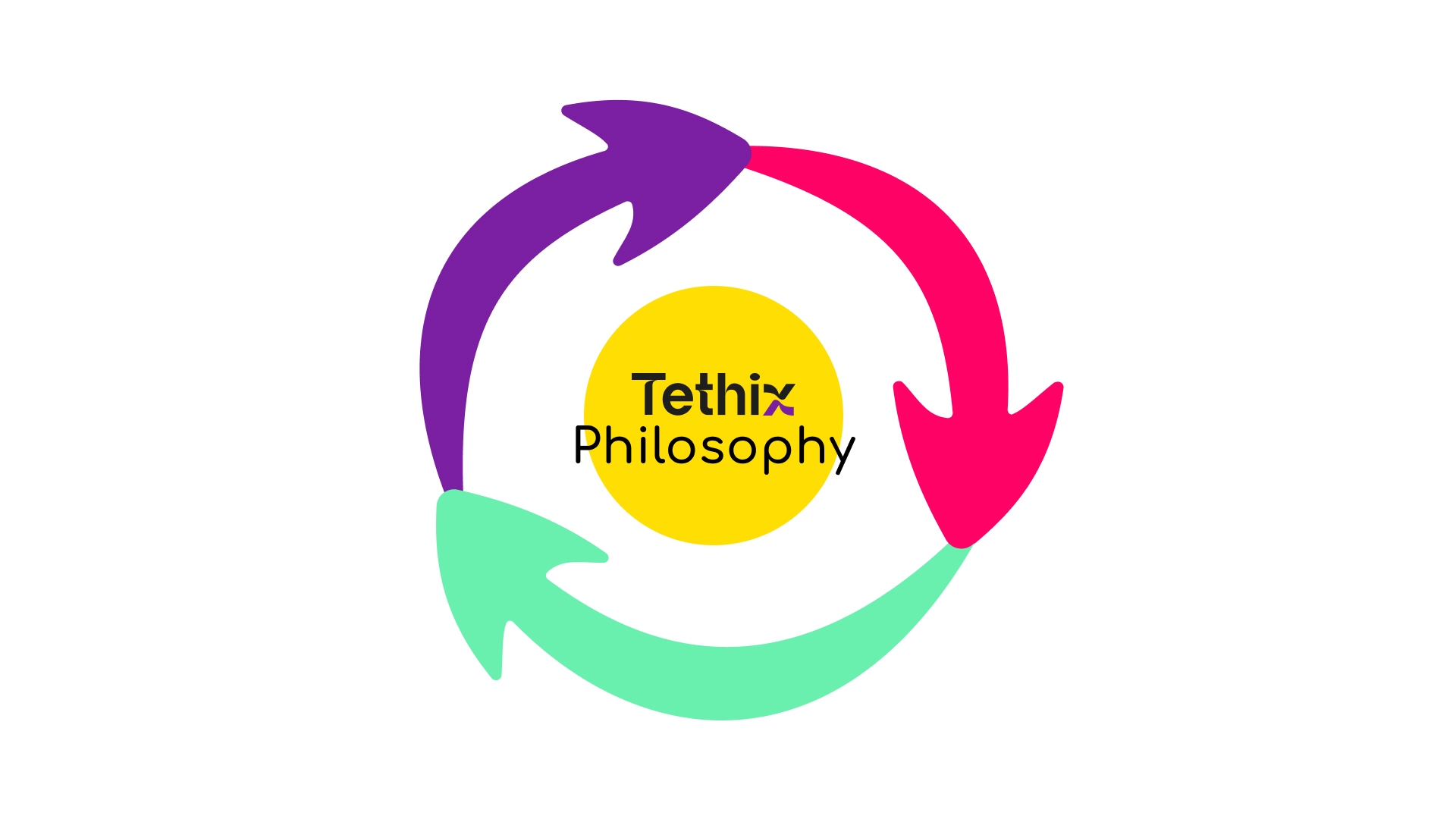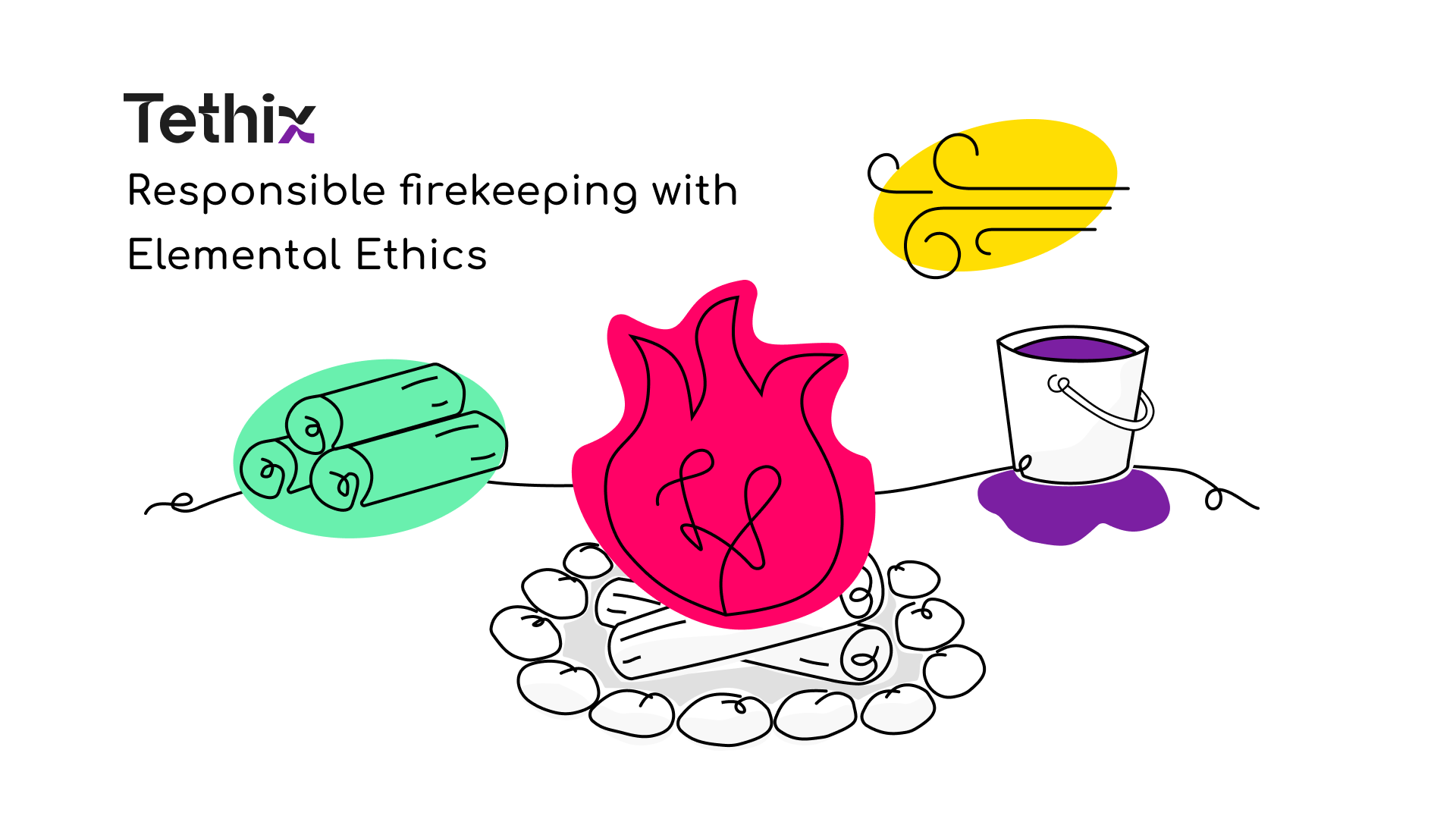Building on the article “Rainbow mirrors: technology and our collective moral imagination” we’re putting out the Taxonomy of Tethix Mirrors. All these mirrors are needed but we can likely all recognise that the overwhelming force in our collective moral imagination is infected by the Black Mirror view. Dystopia to many seems inevitable and we are hoping to help widen the possibility space to finding paths to preferable tech futures. To help in spawning more rainbows to reflect our beauty, diversity and most compelling aspirations.
The “Taxonomy of Tethix Mirrors” draws upon varying shades of optimism, realism, and critique, categorising perspectives into four distinct “mirrors”: Black, Bright, Grey, and Rainbow. Each mirror offers a unique vantage point to explore the possible, projected, probable and preferable futures we’re collectively creating, from dystopian warnings to utopian dreams, from pragmatic outlooks to inclusive aspirations.
By categorising the multifaceted views of technology into distinct ‘mirrors,’ it aids in discerning and aligning technological development with ethical considerations, societal needs, and long-term impacts on human flourishing and environmental regeneration. It’s a strategic design instrument for thought leaders, red teams, blue teams, purple teams, product designers, and policymakers to navigate the intricate moral landscape that technology presents, ensuring that tech innovation is not just functionally adept but also ethically sound and socially responsible. The taxonomy serves as a guiding tool to sense make and can support in:
- Evaluating Impact: Assessing the potential societal, ethical, and environmental impacts of a technology.
- Guiding Development: Informing the design and development phases to align with desired ethical and social outcomes.
- Facilitating Discussion: Stimulating debate and reflection on the potential long-term consequences and the moral responsibilities of tech creators and decision makers.
- Educating Stakeholders: Helping all participants understand the different perspectives and values that come into play with technological advancements.
- Inspiring Policies: Aiding in the creation of governance and policy that considers a range of outcomes and moral considerations.
Black Mirror

The Black Mirror view is the cautionary tale, forewarning of a dystopian future where technology exacerbates human flaws and subjugates individuals and the environment, leading to societal decay.
Pros
- Risk mitigation: helps identify potential downsides early on, allowing for preventive measures.
- Ethical safeguard: forces us to confront uncomfortable truths, serving as a moral guardrail or threshold.
- Civic engagement: can mobilise public opinion against potentially harmful technologies.
Cons
- Innovation dampener: might discourage groundbreaking initiatives due to fear of worst-case scenarios.
- Cynicism: could lead to a general distrust of technology, hampering constructive engagement.
- Paralysis: risks creating a ‘deer in the headlights’ effect where the fear of doing something wrong prevents any action.
Prompting questions
- What are the power dynamics at play with this technology?
- How could this technology be weaponised, literally or metaphorically?
- What’s the worst-case scenario here?
- How could this technology amplify existing inequalities or human flaws?
- Who is missing from the conversation in its development?
- Who is most likely to be negatively impacted?
- What about the non-human living systems in our environment, where do they fit?
Bright Mirror

The Bright Mirror perspective reflects a utopian future where technology is an unequivocal force for good, elevating human capabilities and solving societal problems.
Pros
- Inspirational: fosters a culture of possibility and ‘can-do’ optimism.
- Resource attraction: positive outlooks can attract talent and investment.
- Long-term vision: allows for the setting of ambitious, aspirational goals.
Cons
- Blind spots: could overlook critical ethical and social implications.
- Echo chamber: risks creating an environment where only positive aspects are discussed.
- Unrealistic expectations: may set unattainable standards, leading to disappointment.
Prompting questions
- What is the best possible outcome we could hope for?
- How might this technology realise human potential?
- How does this technology align with shared human values?
- What legacy could this technology leave for future generations?
- Who is included and excluded?
- How might this technology promote equity and justice in society?
- How might this technology enhance education and learning opportunities?
Grey Mirror
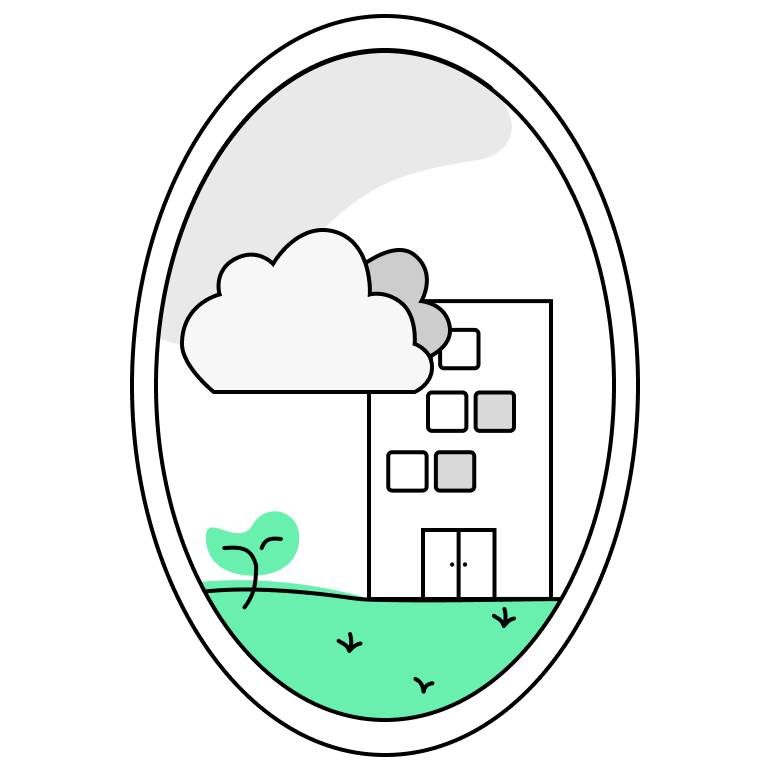
The Grey Mirror offers a pragmatic outlook, acknowledging that technology is a double-edged sword with both positive and negative impacts, requiring careful management.
Pros
- Holistic analysis: encourages weighing the good with the bad for a comprehensive outlook.
- Pragmatism: fosters a balanced approach to ethical considerations and functional demands.
- Resilience: prepares us for both success and failure, making for a more adaptable strategy.
Cons
- Middling impact: may result in solutions that are adequate but not extraordinary.
- Decisional complexity: the nuanced view can complicate the decision-making process.
- Apathy: a focus on balance could be interpreted as a lack of moral conviction.
Prompting questions
- What good and bad outcomes can we expect from this tech?
- How might this tech cause trouble or help us out?
- How will this tech change the way we already do things?
- What steps can we take to reduce any harm this tech might cause?
- If something goes wrong with this tech, what’s our backup plan?
- How will we make sure this tech is fair to everyone?
- How will we check on this tech to keep it safe and useful?
- Can we easily fix or change this tech if we need to?
Rainbow Mirror

The Rainbow Mirror promotes a diverse, inclusive, regenerative and interconnected vision of technology, aiming for a future where tech enriches human life and the environment in a balanced way.
Pros
- Civic participation: promotes grassroots involvement and democratisation of technology.
- Ecological balance: encourages tech solutions that are sustainable and harmonious with nature.
- Social cohesion: could lead to technologies that actively reduce social inequalities.
Cons
- Resource intensive: may require significant effort to include diverse perspectives.
- Idealism: could be dismissed as too utopian and thus not actionable.
- Dilution of focus: aiming to serve too many goals could result in none being achieved effectively.
Prompting questions
- How can we ensure this technology serves diverse needs and is accessible to all?
- What kind of systemic changes might this technology initiate?
- How can this technology cultivate regenerative practices?
- What would the world look like if access to this technology was a basic human right?
- How does this tech support and impact non-human life giving systems?
- How might this tech support mutually assured thriving?
- What does more grassroots collective governance of this technology look like?
Feedback welcome
It’s currently a rough prototype we are actively testing through workshops and playtesting sessions. In these activities we encourage the use of storytelling, sketching, audio visual media or any other creative method to bring the refraction of the future to life.
At this early iteration any and all feedback is welcomed!

